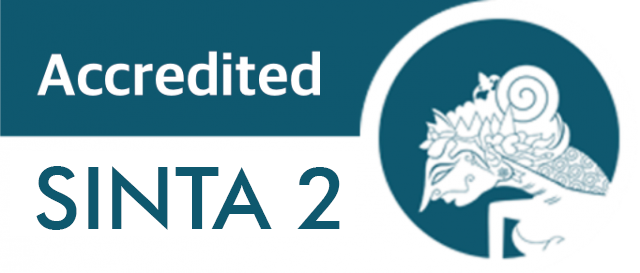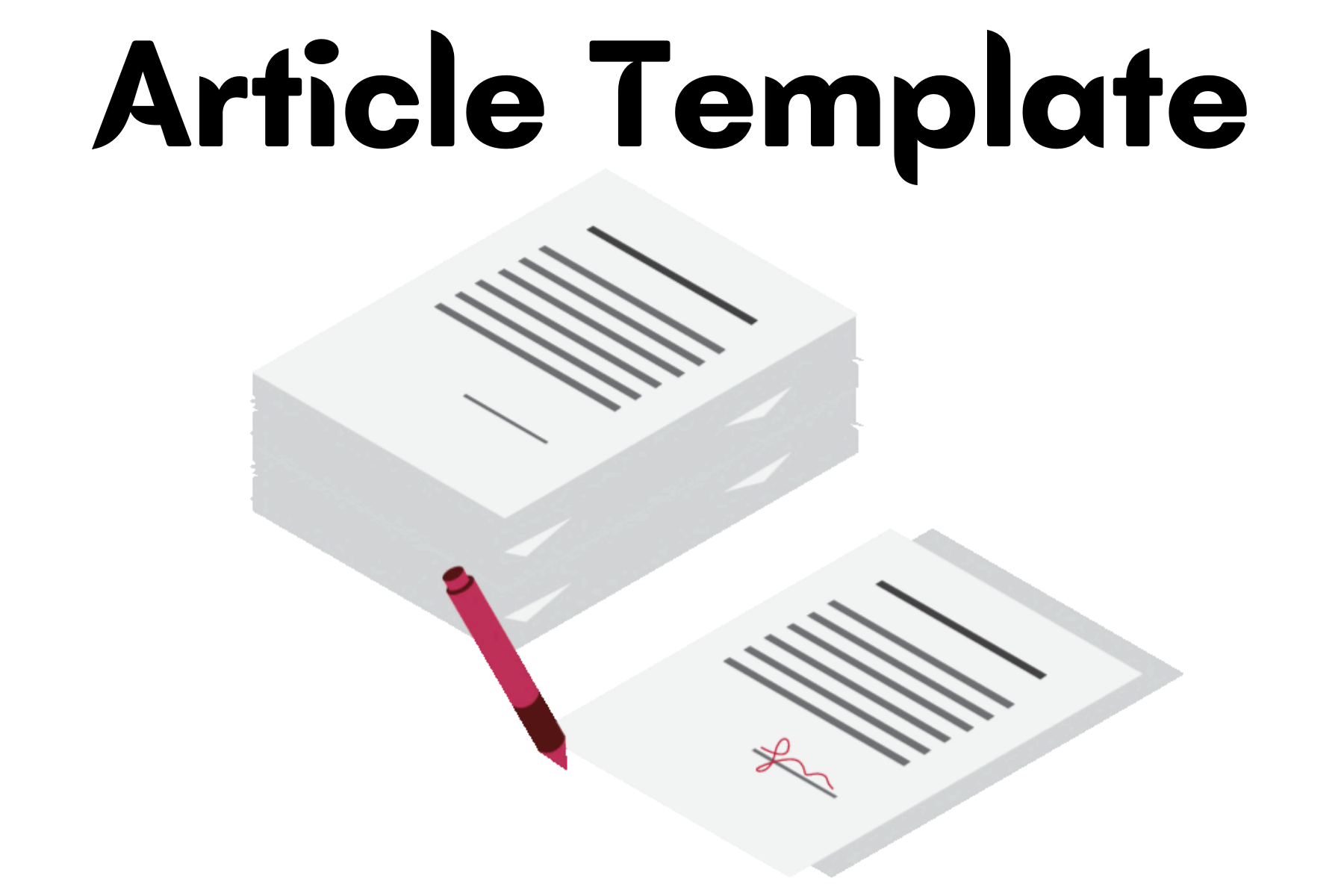Geometry ability in Senior High School Students: Based on Learning Style
DOI:
https://doi.org/10.18326/hipotenusa.v6i1.1901Kata Kunci:
geometry ability, van hiele levels, learning stylesAbstrak
Geometry becomes an important component in mathematics which is learned by students at every stage. Learning style is one of the factors that influence students' geometry abilities. Therefore, it is important to describe how students' geometry abilities are viewed from learning styles. This research is quantitative descriptive research. The instruments used were a learning style questionnaire and a van hiele thinking test (VHGT). The data analysis technique used is descriptive statistical techniques with percentages, namely data from geometry tests that are successfully collected and then analyzed using a category assessment scale. The instruments used were the learning style questionnaire and the Van Hiele thinking test (VHGT). The research subjects were 276 high school students from eleven different schools in West Sumatra with the dominant learning style being visual as many as 104 students, followed by auditory as many as 98 and kinesthetic as many as 74. The results showed that the average students' geometric ability was 47.4 (on a scale of 0-100). In addition, students with a visual learning style have a higher average geometric ability compared to other learning styles. Therefore, it is hoped that teachers can consider using learning models that apply the Van Hiele level of thinking and the dominant learning style in geometry classes, for example by integrating technology.
Referensi
Afifah, A. H., Susanto, Sugiarti, T., Sunardi, & Monalisa, L. . (2019). Analisis Keterampilan Geometri Siswa Kelas X Dalam Menyelesaikan Soal SEgiempat Berdasarkan Level van Hiele. Kadikma, 10(3), 35–47.
Alfaruqi, A. I., & Lutfianto, M. (2016). Seminar Nasional Pendidikan Matematika Ahmad Dahlan.
Anwar, A. (2019). Perbedaan Hasil Belajar Matematika Siswa ditinjau dari Level Geometri Van Hiele SMP Kelas VII. MANDALIKA Mathematics and Educations Journal, 1(2), 74. https://doi.org/10.29303/mandalika.v1i2.1536
Anwar, A. (2020). Identifikasi Tingkat Berpikir Geometri Siswa Berdasarkan Teori Van Hiele. Jurnal Pendidikan Matematika (JUDIKA EDUCATION), 3(2), 85–92. https://doi.org/10.31539/judika.v3i2.1616
Aziiza, Y. F., Rosjanuardi, R., & Juandi, D. (2022). Didactic Design of the Concept of Surface Area of Flat-Sided Prism Based on van Hiele’s Theory in Online Learning. Jurnal Pendidikan Matematika, 16(1), 73–88. https://doi.org/10.22342/jpm.16.1.13789.73-88
Bosman, A., & Schulze, S. (2018). Learning style preferences and mathematics achievement of secondary school learners. South African Journal of Education, 38(1), 1–8. https://doi.org/10.15700/saje.v38n1a1440
Chetty, N. D. S., Handayani, L., Sahabudin, N. A., Ali, Z., Hamzah, N., Rahman, N. S. A., & Kasim, S. (2019). Learning styles and teaching styles determine students’ academic performances. International Journal of Evaluation and Research in Education, 8(4), 610–615. https://doi.org/10.11591/ijere.v8i3. 20345
Fauzi, I., & Arisetyawan, A. (2020). Analisis Kesulitan Belajar Siswa pada Materi Geometri Di Sekolah Dasar. Kreano, Jurnal Matematika Kreatif-Inovatif, 11(1), 27–35. https://doi.org/10.15294/kreano.v11i1.20726
Firmanti, P. (2022). Student ’ s Cognitive Conflict in Geometry Learning. Al-Ishlah, Jurnal Pendidikan, 14(2001), 4713–4722. https://doi.org/10.35445/alishlah.v14i3.2236
Firmanti, P., Putra, D. A., & Padang, S. C. (2021). Hubungan Kemampuan Pemecahan Masalah dengan Efikasi Diri Siswa SMAN 1 Banuhampu. Lattice Journal : Journal of Mathematics Education and Applied, 1(2), 123. https://doi.org/10.30983/lattice.v1i2.5087
Ishartono, N., Faiziyah, N., Sutarni, S., Putri, A. B., Fatmasari, L. W. S., Sayuti, M., Rahmaniati, R., & Yunus, M. M. (2021). Visual, Auditory, and Kinesthetic Students: How They Solve PISA-Oriented Mathematics Problems? Journal of Physics: Conference Series, 1720(1). https://doi.org/10.1088/1742-6596/1720/1/012012
Jagom. Yohanes Ovaritus. (2015). Kreativitas Siswa Smp Dalam Menyelesaikan Masalah Geometri Berdasarkan Gaya Belajar Visual-Spatial Dan Auditory-Sequential. Math Didactic: Jurnal Pendidikan Matematika, 1(3), 17.
Machromah, I. U., Ishartono, N., Mirandhani, A., Muhroji, Samsudin, M., Basry, W., & Ernitasari. (2021). PISA Problems Solving of Students with a Visual Learning Styles. Journal of Physics: Conference Series, 1720(1). https://doi.org/10.1088/1742-6596/1720/1/012010
Meryansumayeka, Zulkardi, Putri, R. I. I., & Hiltrimartin, C. (2022). Designing geometrical learning activities assisted with ICT media for supporting students’ higher order thinking skills. Journal on Mathematics Education, 13(1), 135–148. https://doi.org/10.22342/jme.v13i1.pp135-148
Muslimin, M., & Sunardi, S. (2019). Analisis Kemampuan Penalaran Matematika Siswa SMA Pada Materi Geometri Ruang. Kreano, Jurnal Matematika Kreatif-Inovatif, 10(2), 171–178. https://doi.org/10.15294/kreano.v10i2.18323
Novilanti, F. R. E., & Suripah, S. (2021). Alternatif Pembelajaran Geometri Berbantuan Software GeoGebra di Masa Pandemi Covid-19Alternatif Pembelajaran Geometri Berbantuan Software GeoGebra di Masa Pandemi Covid-19. Jurnal Cendekia : Jurnal Pendidikan Matematika, 5(1), 357–367. https://doi.org/10.31004/cendekia.v5i1.538
Perangin-angin, D. S., & Khayroiyah, S. (2021). Analisis Kemampuan Spasial Visualization Siswa Pada Materi Geometri Transformasi Menggunakan Aplikasi Zoom Di Sma Persiapan Stabat T.P.2020/2021. Maju, 8(2), 389–398.
Pusat Penilaian Pendidikan Kementerian Pendidikan dan Kebudayaan. (2019). Diakses anggal 2 Februari 2023.
Rini, D. S., Adisyahputra, & Sigit, D. V. (2020). Boosting student critical thinking ability through project based learning, motivation and visual, auditory, kinesthetic learning style: A study on Ecosystem Topic. Universal Journal of Educational Research, 8(4A), 37–44. https://doi.org/10.13189/ujer.2020.081806
Rohaeti, E. E., & Bernard, M. (2018). the Students’ Mathematical Understanding Ability Through Scientific-Assisted Approach of Geogebra Software. Infinity Journal, 7(2), 165. https://doi.org/10.22460/infinity.v7i2.p165-172
Şener, S., & Çokçalışkan, A. (2018). An Investigation between Multiple Intelligences and Learning Styles. Journal of Education and Training Studies, 6(2), 125. https://doi.org/10.11114/jets.v6i2.2643
Setyawati, Y. (2018). PENGARUH GAYA BELAJAR VISUAL TERHADAP HASIL BELAJAR MATERI GEOMETRI SISWA KELAS V SD MUHAMMADIYAH GIRIKERTO TURI SLEMAN. Universitas Islam Negeri Sunan Kalijaga Yogyakarta.
Utaminingtyas, K. T., Herdianti, R. E., Fitria, I. H., & Prayitno, A. (2017). Small Groups: Student Productive Interactions in Learning Cooperative (Case Study of Mathematics Learning at Junior High School in Pakis, Malang). Educational Process: International Journal, 6(2), 37–42. https://doi.org/10.22521/edupij.2017.62.3
Wicaksono, A. B., Chasanah, A. N., & Sukoco, H. (2021). Kemampuan Pemecahan Masalah Geometri Berbasis Budaya Ditinjau Dari Gender Dan Gaya Belajar. AKSIOMA: Jurnal Program Studi Pendidikan Matematika, 10(1), 240. https://doi.org/10.24127/ajpm.v10i1.3256
Wulandari, T. A., & Ishartono, N. (2022). Analisis Kemampuan Representasi Matematika Siswa SMA Dalam Menyelesaikan Soal Geometri Berdasarkan Level Berpikir Van Hiele. JNPM (Jurnal Nasional Pendidikan Matematika), 6(1), 97. https://doi.org/10.33603/jnpm.v6i1.5330
Yudianto, E., Sunardi, S., Sugiarti, T., Setiawan, T. B., & Maghfiroh, A. (2022). Pengaruh Penerapan Fase-Fase Pembelajaran Van Hiele Terhadap Tingkat Berpikir Geometri Siswa SMA. Jurnal Cendekia : Jurnal Pendidikan Matematika, 6(1), 710–720. https://doi.org/10.31004/cendekia.v6i1.1289
Yuliana, D., & Ratu, N. (2019). Analisis Keterampilan Dasar Visual Geometri Siswa SMP Ditinjau Berdasarkan Level Berpikir Analisis Van Hiele. Jurnal Cendekia : Jurnal Pendidikan Matematika, 3(2), 536–549. https://doi.org/10.31004/cendekia.v3i2.135
Zagoto, M. M., Yarni, N., & Dakhi, O. (2019). Perbedaan Individu Dari Gaya Belajarnya Serta Implikasinya Dalam Pembelajaran. Jurnal Review Pendidikan Dan Pengajaran, 2(2), 259–265. https://doi.org/10.31004/jrpp.v2i2.481
Zales, J. P., & Vasquez, R. S. (2022). Learning styles and achievement in geometry. South Florida Journal of Development, 3(4), 5542–5548. https://doi.org/10.46932/sfjdv3n4-117
Effendi, S. (1982). Unsur-unsur penelitian ilmiah. Dalam Masri Singarimbun (Ed.). Metode penelitian survei. Jakarta: LP3ES.
Daniel, W.W. (1980). Statistika nonparametrik terapan. (Terjemahan Tri Kuntjoro). Jakarta : Gramedia.
Suyanto, S (2009). Keberhasilan sekolah dalam ujian nasional ditinjau dari organisasi belajar. Disertasi, tidak dipublikasikan. Universitas Negeri Jakarta.
Pritchard, P.E. (1992). Studies on the bread-improving mechanism of fungal alpha-amylase. Journal of Biological Education, 26 (1), 14-17.
Retnawati, H. (2014). Teori respon butir dan penerapannya. Yogyakarta: Nuha Medika.
Rahmawati, U., & Suryanto, S. (2014). Pengembangan model pembelajaran matematika berbasis masalah untuk siswa SMP. Jurnal Riset Pendidikan Matematika, 1(1), 88-97. Retrieved from http://journal.uny.ac.id/index.php/jrpm/article/view/2667
Unduhan
Diterbitkan
Cara Mengutip
Terbitan
Bagian
Lisensi
Hak Cipta (c) 2024 Pipit Firmanti, Fauzi Yuberta, Dimas Danar Septiadi, Nurulzhia Rahma Nisa

Artikel ini berlisensiCreative Commons Attribution-NonCommercial-ShareAlike 4.0 International License.

This work is licensed under a Creative Commons Attribution-ShareAlike 4.0 International License.



